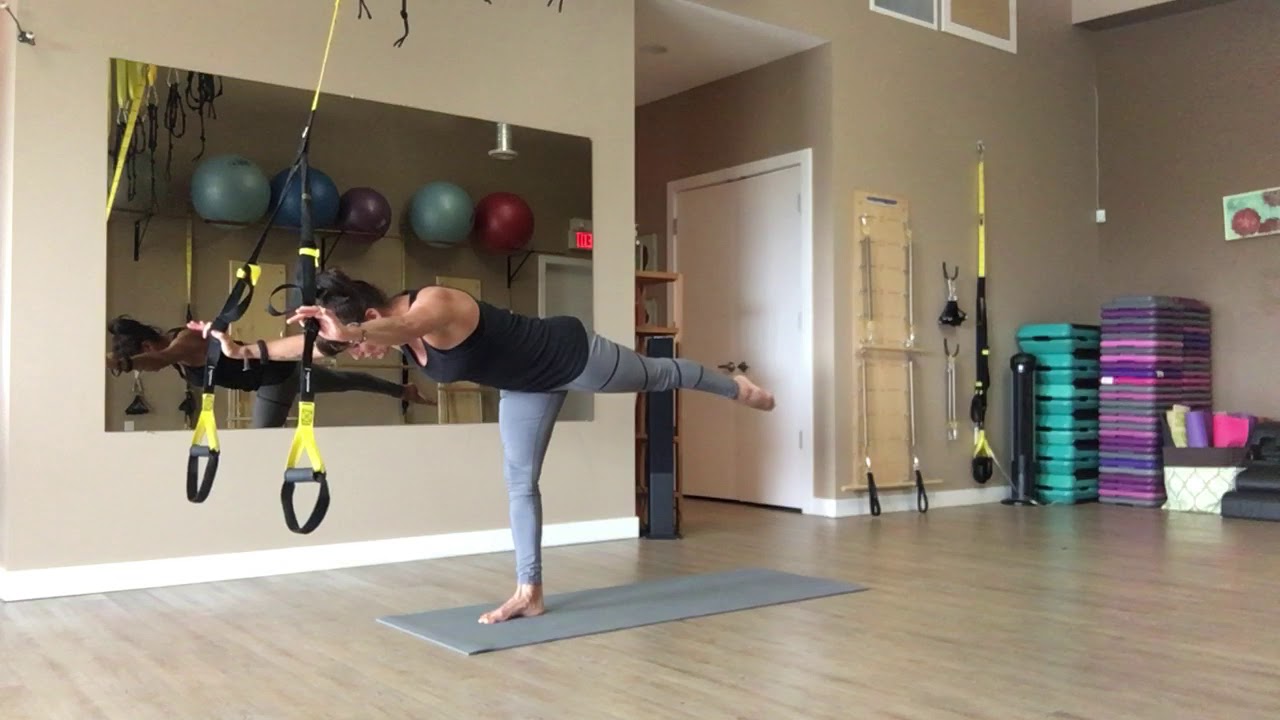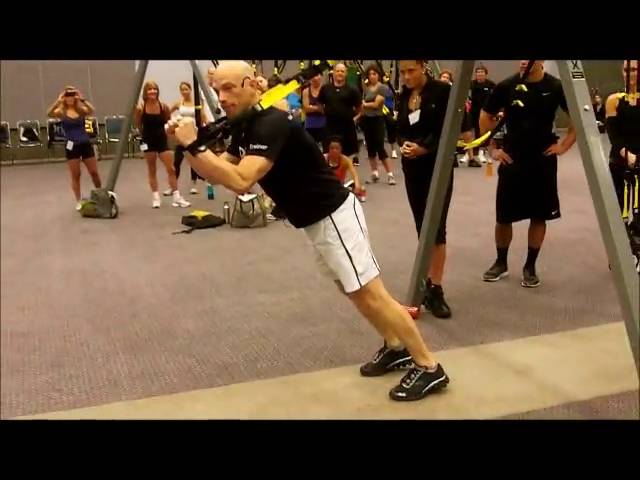If you read up on part one of The Evolution of the TRX Foundational Movements, you were introduced to our evolved TRX Foundational Movement pyramid, which introduced four new foundational movements: bend, twist, step, and crawl. You learned that understanding the movements--and what should be stable and what should be mobile when performing them--enhances your ability to coach clients in the gym to achieve results with the added bonus of helping them move better (and safer) in everyday life. We also discussed the inspiration behind this movement evolution and presented the first of the seven-to-11 movements, the Hinge to Bend.
If you missed part one of this series, you’ll want to click on over and give it a read as the info presented there will make it easier for you to digest what awaits you here, which is all about the Rotate to Twist.
Rotation Evolved
If you’re up to speed on the TRX Coaching Methodology and the TRX Foundational Movements, you’ll know that rotation—cylindrical rotation of the torso to minimize risk and emphasize hip power transmitted through the torso—has been a part of the lexicon from the beginning. The Power Pull (pictured below), for example, is a staple rotational TRX move. But rotation is a movement pattern that also exists frequently outside of the gym - for instance, something as simple as getting your kids out of the car, or moving the milk from the kitchen counter to the refrigerator, are common examples of daily rotational activities.
Now it’s time to expand on rotation to provide your athletes with a new challenge, or as we like to call it, Changing the Condition. Changing the Condition simply means that you apply the standards of similar exercises using different equipment, movement variations or unilateral iterations; adding reps; evolving the complexity; or increasing power, ie, Rotate to Twist.
What Is the Twist?
Twist refers to the dissociation of the transverse plane motion between shoulders and hips. It’s termed the "X-factor" in rotational activities like swinging a golf club, throwing a round-house kick, and other similar ballistic, rotation-based moves.
Twisting can also occur from the ground up such as when kicking a soccer ball or from the top down, like tossing a football. It is a way to further wind up the body’s muscle and fascia to create more power and is similar to what happens when a rubber band is stretched (being careful to over stretch the band). The greater the stretch, the greater the power when released. When a golfer is able to increase their X-Factor, the body’s viscoelastic properties are maximized, making it much easier to send the ball farther through the air. It could mean the difference between a birdie or a double bogey.
Twisting Considerations
In order to twist properly, the individual should possess mobility in the cervical spine and foot (midtarsal or transverse arch). Adequate mobility allows for greater power production and protects the sensitive mid-cervical spine and posterior ankle joints from damage.
Twisting should occur around a tight axis—excessive trunk sway in the sagittal and/or frontal planes will decrease power output potential. A golfer with too much side-to-side trunk shift will leak energy resulting in a less powerful swing.
The Keys to Proper Twisting
Now that you have a good understanding of the twist, we can dive into how to ensure that you and your clients know how to execute the movement safely and effectively. This is boiled down to two keys, “Share the Load” and “Utilize Progressive Loading.”
1. Share the Load
Twisting should occur throughout all segments of the body, from the top of the spine to the bottom of the foot. Unfortunately, due to postural dysfunction resulting from questionable movement habits and training methods, many people experience stiffness in areas that need to be mobile in order to twist optimally. To enhance twist potential, mobility training should emphasize the upper cervical spine, thoracic spine, hips, and the foot/ankle.
Side tip: If your mobility know-how is lacking, you might want to consider looking into some of our TRX Education courses. For instance, in our TRX Suspension Training Course you will have the opportunity to experience a mobility-based workout. Additionally, we will continue to layer in new mobility exercises into each progressive course’s exercise library.
Also, if you’re planning on heading to IDEA World 2019 this June, check the TRX Success Formula track. We have a great line up of sessions that will expand on this topic.
Smart movement progression is a vital component of any successful client or athlete training program. Keep in mind that with speed and power comes risk. Pushing too hard too fast can result in excessive soreness, pain, or injury. Make sure to use caution; allow the body time to adapt to increased forces and the mind to fully absorb the mechanics of how to properly execute them.
A Note on Skill Development
The TRX Foundational Movement System is based on the concept that movement is a skill that needs time and proper coaching to build. You can’t expect to pick up a guitar for the first time and bust out “Sultans of Swing.” Before you can do that, you need to understand notes and chords, and take plenty of time to practice and perfect them. The same goes for movement. To perform any movement—especially those that feature higher level condition changes like the Twist—the athlete must develop the skill through careful and measured progression. They should display rotational mastery before increasing the intensity with a Twist. Focusing on the development of human movement as the fundamental building block of fitness, performance, and durability is what drives our motto, “Make Your Body Your Machine.”
Check out the continued evolution of our TRX Foundational Movements where we introduce LUNGE to STEP.
-----
To learn more about movement-based training, check out our TRX Education schedule here.



